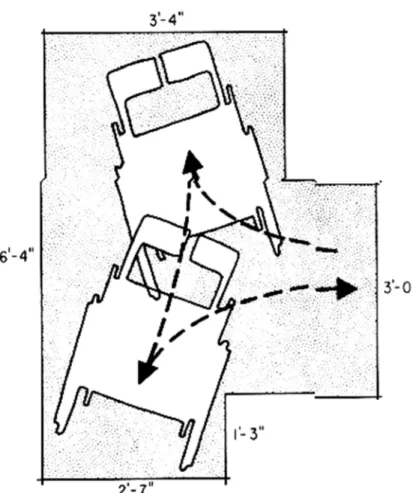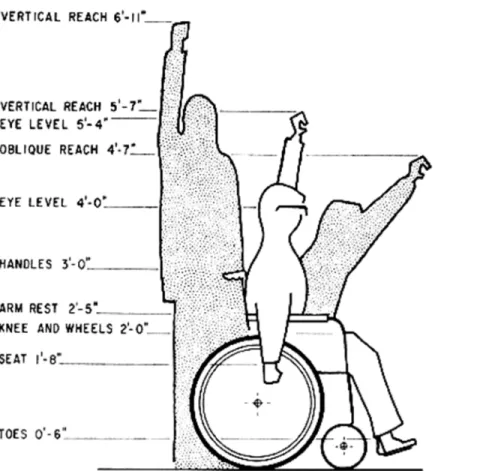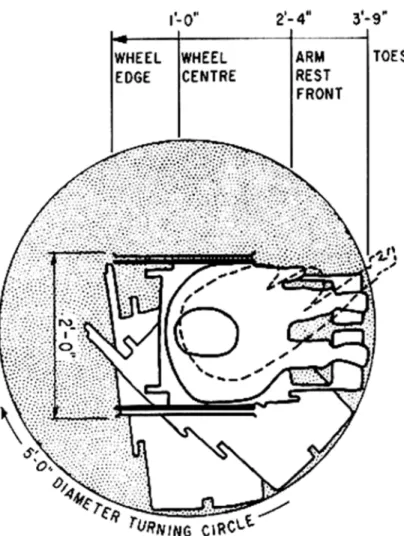Publisher’s version / Version de l'éditeur:
Vous avez des questions? Nous pouvons vous aider. Pour communiquer directement avec un auteur, consultez la première page de la revue dans laquelle son article a été publié afin de trouver ses coordonnées. Si vous n’arrivez pas à les repérer, communiquez avec nous à PublicationsArchive-ArchivesPublications@nrc-cnrc.gc.ca.
Questions? Contact the NRC Publications Archive team at
PublicationsArchive-ArchivesPublications@nrc-cnrc.gc.ca. If you wish to email the authors directly, please see the first page of the publication for their contact information.
https://publications-cnrc.canada.ca/fra/droits
L’accès à ce site Web et l’utilisation de son contenu sont assujettis aux conditions présentées dans le site
LISEZ CES CONDITIONS ATTENTIVEMENT AVANT D’UTILISER CE SITE WEB.
Canadian Building Digest, 1971-03
READ THESE TERMS AND CONDITIONS CAREFULLY BEFORE USING THIS WEBSITE. https://nrc-publications.canada.ca/eng/copyright
NRC Publications Archive Record / Notice des Archives des publications du CNRC :
https://nrc-publications.canada.ca/eng/view/object/?id=1176cad0-3c3b-4007-9942-072c2d3419c7
https://publications-cnrc.canada.ca/fra/voir/objet/?id=1176cad0-3c3b-4007-9942-072c2d3419c7
NRC Publications Archive
Archives des publications du CNRC
For the publisher’s version, please access the DOI link below./ Pour consulter la version de l’éditeur, utilisez le lien DOI ci-dessous.
https://doi.org/10.4224/40000886
Access and use of this website and the material on it are subject to the Terms and Conditions set forth at
Consideration of the physically disabled
Canadian Building Digest
Division of Building Research, National Research Council Canada
CBD 135
Consideration of the Physically
Disabled
Originally published March 1971 D.N. Henning
Please note
This publication is a part of a discontinued series and is archived here as an historical reference. Readers should consult design and regulatory experts for guidance on the applicability of the information to current construction practice.
Buildings are designed for the able bodied. As a result many disabled and elderly people find building facilities hazardous, awkward, frustrating or unusable. Even minor modifications at the design stage could result in facilities suitable for both the able and many of the disabled population.
The problems disabled people face in trying to cope with an unsuitable physical environment aggravate other social and financial problems they may have. They cannot work, shop, or play in buildings they cannot enter, nor work in areas where adequate residential facilities are not within easy commuting distance. Through rehabilitation and the development of various aids, disabled people's ability to cope with vocational, recreational and daily living activities is being improved. To make use of this improved ability certain modifications to typical building facilities are necessary, and such improvements can best be realized through consideration of the users' requirements and limitations.
Disabilities
There are many types and degrees of disability. Perception, muscle control, and strength can be generally reduced as with some elderly people or more specifically with amputees or the blind. There are also variations in aids such as a cane or wheelchair used to reduce the handicapping effect. Even with these wide variations, some characteristics are generally applicable to all disabilities. For example, reduction in the ability to react quickly creates a greater potential for accidents, especially falls, and reduced adaptability makes equipment difficult to use.
The number of people who are disabled is unknown. Estimates range from less than 1 per cent to more than 20 per cent, depending on how 'disabled' is defined. Unfortunately, the type of definition used for census purposes is often related to particular diseases and not to the effects these diseases have on a person's ability to use buildings. There are, in addition, numbers of people who have difficulty because they are atypical, although not generally considered disabled. This group includes pregnant or heavy people, children or very short people, tall people, and people with heart or respiratory conditions.
To enable disabled people to use buildings their characteristics should be considered at the design stage. It would be an impossible task to include all types and degrees of disability, but one can consider some specific examples. This Digest discusses three example models of disabled people in order to indicate the nature of the problem and provide a basis for comparing disabled and able bodied people. These models, briefly described as an elderly person, a person with one-sided disabilities, and a person in a wheelchair, were chosen to represent a wide range of physical characteristics that can make buildings difficult to use.
The Elderly
A number of characteristics associated with old age create difficulties in building use. Many elderly people suffer from rheumatic conditions and stiff joints, which limit their hand grasping and manipulation ability. They are unable to move their limbs to extreme positions such as for reaching up, down or twisting round. Reduced muscular strength and energy increase this problem and can preclude activities requiring even moderate strength or activities sustained over long periods of time.
Many situations are hazardous for elderly people because of their reduced physical ability. Leaking gas or smoke may not be detected, slight differences in floor level may not be seen, pots and pans may be easily spilled, and warning signals may go unheard. Some elderly people are particularly susceptible to falls and stumblings because of poor vision and balance as well as reduced strength and ability to react quickly. For an older person the consequences of a fall are quite serious because bones tend to be more brittle and therefore more subject to breaks. Elderly people may experience difficulty in moving from one place to another or in standing for long periods of time. Quite often the hands are used for extra balance while walking and the more stable posture of sitting is preferred. Difficulty may also be experienced in using equipment because of reduced strength, vision, and control of hand movements as well as possible inexperience with something new.
One-Sided Disabilities
Anyone who has the use of only one hand or arm faces a number of difficulties in using a typical building. Components such as locked doors require the use of two hands; bathtubs and hand rails are left or right sided and may be situated on the 'bad' side of the user. The use of only one hand is a problem not only for people who have some hand disability but also for those with poor balance or poor muscle control who must use the one hand to maintain body stability.
Many with disabilities on one side are affected in both arm and leg. This condition increases vulnerability to accidental falls because of reduced balance and reduced ability to check an imbalance. Extra body support is needed in situations of unstable or changing posture, such as when using stairs or toilet facilities, and good footing is needed at all times.
A Person in a Wheelchair
There is great variation in the physical capabilities of people who use wheelchairs. Some have very weak arms and cannot propel themselves over floor surfaces such as soft carpets or slight inclines. Others have very strong arms and may be able to stand for a short period of time, given adequate grab rails. Quite often a person using a wheelchair has no feeling in his legs and may easily damage himself by leaning against a hot radiator or bumping into a sharp object.
The seated posture of a person in a wheelchair creates an area of reach and an eye level that differ greatly from those experienced by a standing, able bodied person. Everything that must be reached, shelving or switches, and everything that must be seen into or through, windows, mirrors and drawers, must be lower than those for a standing person.
Anyone using a wheelchair requires much more space to manoeuvre than does an able bodied person (Figure 1, Figure 2, & Figure 3), and is limited to a smaller number of acceptable flooring conditions. A standard wheelchair is 24 inches wide, 42 inches long and requires a
60-inch diameter circle to turn completely round. The most frustrating and handicapping situations experienced by most people in wheelchairs involve mobility and the barriers created by steps, stairs, poor flooring surfaces, narrow doorways and heavy doors.
Figure 3. Space required for complete turn Functional Requirements
The basic requirements of a building facility for both the able and disabled population are accessibility and usability: everyone should be able to reach a desired area within a building and once there should be able to use the facilities provided. Accessibility involves not only movement within the building but also movement from the street or parking area through the building entrance. A building that provides wheelchair access is accessible to most people who are disabled but mobile.
Major Problem Areas
Building entrances and toilet facilities are the functional areas in which disabled people seem to have the greatest problems. Steps and narrow doorways, and doors positioned too close together in series do not allow for the passage of a wheelchair. Toilet facilities are usually very difficult for anyone in a wheelchair to use because of too little space (particularly toilet stalls), fixtures designed to be used from the standing position, and doorways that are too narrow. Elderly people often have difficulty turning taps and find getting in and out of bathtubs too hazardous. Changes in posture from standing to sitting to lying in a tub require considerable agility, and the possibility of a bad accident is high for anyone with a physical disability.
Generally speaking, fixed, built-in equipment and facilities in public areas present the greatest difficulties because the disabled user is unable to adjust the facility enough to meet his particular needs. These difficulties are compounded in areas such as kitchens and washrooms where a great deal of activity occurs.
Building facilities designed for a cross-section of the population, including the physically disabled, need not necessarily be radically different. In many cases minor changes in typical solutions will provide facilities that are quite acceptable for the disabled. All facilities need not be built to accommodate them. Where a number of facilities exist in parallel, such as washroom fixtures or telephone booths, it is quite satisfactory to have only one or two fixtures usable by disabled people.
Facilities that can be used in several different ways and require little strength and muscular control are most desirable. A physical disability reduces one's capacity to adapt, so that the building facility rather than the individual must be adaptable; for example, a shower head on a flexible hose that can be hand held or attached to the wall at several locations suits a wide range of activity-facility combinations and allows more people to use it than does the conventional fixed shower arrangement.
In many cases a building facility designed for a particular disability as well as for able bodied people will meet the requirements of other disabilities because of the general facility characteristics involving increased safety, increased adaptability and reduced energy needed for use.
Additional Information
There are a number of publications that discuss appropriate building solutions to the problems of disabled people. The Associate Committee on the National Building Code of Canada has published Supplement No. 5, Building Standards for the Handicapped 1970, which specifies the minimum requirements necessary to make buildings accessible to disabled people. The Canadian Rehabilitation Council for the Disabled has recently published a bibliography on architectural barriers. Central Mortgage and Housing Corporation has published a booklet Housing the Elderly and is soon to publish a booklet on housing for disabled people. The most comprehensive design guide available on the subject is Designing for the Disabled, by S. Goldsmith, McGraw Hill, 2nd ed. 1967, 207 pages.
Location Signs
At the present time most buildings are in one way or another unsuitable for disabled people. To identify those that are accessible to the disabled the symbol shown below (Figure 4) has been developed and adopted by the International Society for Rehabilitation of the Disabled. It has replaced the previously used Canadian symbol as a marker for buildings accessible to the disabled. Blue decals of this symbol are available from the Canadian Rehabilitation Council for the Disabled, Suite 303, 165 Bloor Street East, Toronto 285, Ontario.


